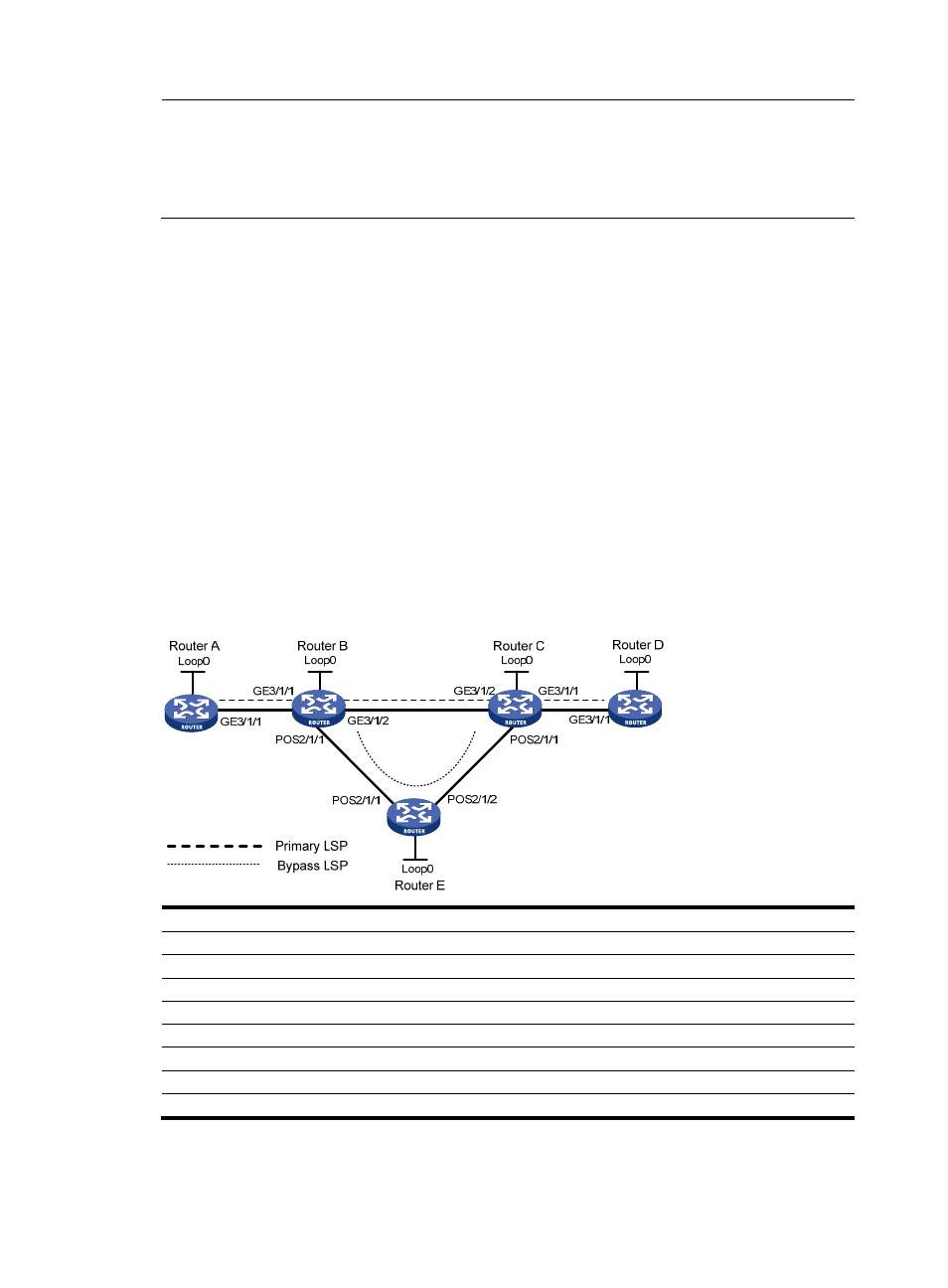Frr configuration example, Network requirements – H3C Technologies H3C SR8800 User Manual
Page 131

120
NOTE:
Configuring ordinary CR-LSP backup is almost the same as configuring hot CR-LSP backup except that you
need to replace the mpls te backup hot-standby command with the mpls te backup ordinary command.
Unlike in hot CR-LSP backup where a secondary tunnel is created immediately upon creation of a primary
tunnel, in ordinary CR-LSP backup, a secondary CR-LSP is created only after the primary LSP goes down.
6.
Create a static route for routing MPLS TE tunnel traffic
[RouterA] ip route-static 20.1.1.2 24 tunnel 4 preference 1
Perform the display ip routing-table command on Router A. You can find a static route entry with
interface Tunnel4 as the outgoing interface.
FRR configuration example
Network requirements
On a primary LSP Router A Router B Router C
→
→
→
Router D, use FRR to protect the link Router B
→
Router C.
Do the following:
•
Create a bypass LSP that traverses the path Router B Router E Router C. Router B is the PLR and
→
→
Router C is the MP.
•
Explicitly route the primary TE tunnel and the bypass TE tunnel with the signaling protocol being
RSVP-TE.
Figure 31 Network diagram
Device Interface IP
address
Device
Interface
IP address
Router A
Loop0
1.1.1.1/32
Router E
Loop0
5.5.5.5/32
GE
3/1/1
2.1.1.1/24
POS 2/1/1
3.2.1.2/24
Router B
Loop0
2.2.2.2/32
POS 2/1/2
3.3.1.1/24
GE 3/1/1
2.1.1.2/24
Router C
Loop0
3.3.3.3/32
GE
3/1/2
3.1.1.1/24
GE 3/1/1
4.1.1.1/24
POS
2/1/1
3.2.1.1/24
GE 3/1/2
3.1.1.2/24
Router D
Loop0
4.4.4.4/32
POS 2/1/1
3.3.1.2/24
GE
3/1/1
4.1.1.2/24
